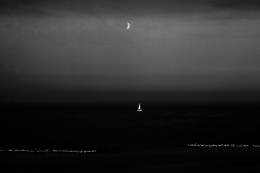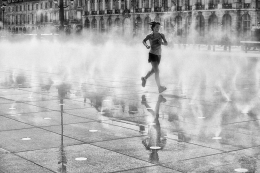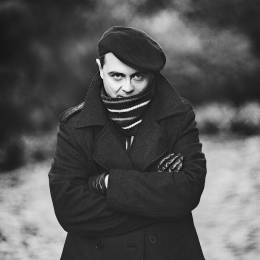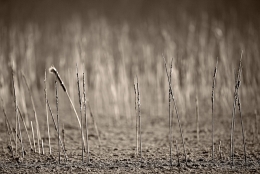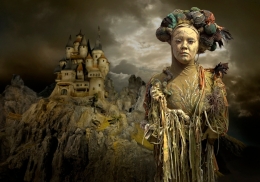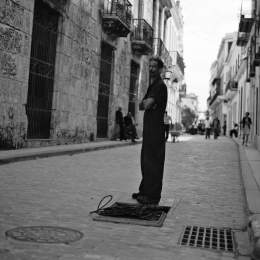About Paul Cooklin:
Portfolio @ http://www.paulcooklin.com
Statement
In the beginning
My imagination was initially sparked in 1976 at the age of five when I was taken to see the original Star Wars movie (My uncle had a part in it as a Storm Trooper!). I was blown away by the big screen, special effects and creativity which sparked my imagination.
My first experience of photography was a few years later through my Dad who frequently ventured up to the loft to his darkroom for hours at a time. There he would mix potions and chemicals together in a dark and red lit room which always had a strange smell to it. I would be witness to, what I considered magic. A seemingly plain piece of paper would be subjected to light and then dipped in various trays of chemicals and right before my eyes, gradually a picture would emerge.
Digital Art
It would be many years later that these two experiences would manifest in to creating sci-fi and abstract hi-tech digital art for Brand X Pictures (Picture Arts, now owned by Getty Images) which continues to be published internationally.
I began looking for ways of creating abstract digital compositions using photographic images which I would combine with lots of other layers in Photoshop to create a final composition. I bought a Canon EOS 5D digital SLR as a tool to help with the process. This approach worked well for some time and lead to a series of published stock disks and an increased art portfolio, but I soon became uninspired by the whole 'digital art/illustration' path and turned my focus on creating purely photographic compositions, instead of digital art. The new discipline of photography was very different to what I was used to. When creating digital art I could create exactly what I wanted from nothing, whereas with photography I had to find the composition/subject first and then decide how I wanted the image to look. Initially, the instant gratification of the LCD screen on the back of the 5D acted as reassurance and a guide to my photography, but I soon became disappointed with the overall look of the images and found myself 'tweaking' them considerably in Photoshop and later on in Lightroom before being happy with the final piece. This was not the direction I wanted to go in and was looking for alternative tools to help achieve the look I was searching for.
Film Photography
Around the same time that I bought the 5D I also acquired a Bronica ETRS medium format film camera. When I finally decided to spend some time with the Bronica I instantly liked the feel of it in my hands and the much larger view finder, which is positioned on top so the user looks down from waist height to see the image, rather than holding the view finder up to my eye as I had with my 5D. I took a few rolls of film using the hand held Weston light meter as a guide and sent the film off to the lab. I remember being quite excited at the prospect of receiving my film and prints back from the lab. When they arrived they were generally underexposed, out of focus and poorly composed, but I loved them! Mainly because they had a look and feel so different to the 5D I had been using. They looked 'authentic', the real thing, and had a look that was reminiscent of the 1950's. I was hooked at that moment on film! I invested in an Epson V750 pro scanner and went around photographic shops buying up expired 120 films, colour and black and white. I shot as much as I could afford to buy and process. I noticed how each colour film, negative and slide, had a different colour palette and character, some of which I liked and preferred over others. I still enjoy trying old and new emulsions but sadly a few of the brands have ceased production of certain film stocks as digital capture has forced their demise. I now use a Hasselblad 500cm, Canon A1, Canon EOS 1V, Arax 60, Bronica ETRSi and a Holga GCFN.
I want to be quite clear; I'm not against digital photography! Film is not 'better' than digital or vice versa. I now generally shoot digitally for stock and film for art. I can see the many 'benefits' digital photography has to offer most people. Those that just use a camera to capture holiday moments or family shots, a digital camera is probably the right choice. The majority of people who earn a living from stock photography benefit from the lack of film and processing costs and the added advantage of a quick turnaround that digital capture offers over shooting film. Digital photography is advancing in to areas of technology which for some has proven to be of great benefit. Today you are able to buy lenses which offer image stabilisation and bodies which can do everything on auto-pilot and produce very large RAW files with incredible detail. You will find on many forums countless other reasons why digital capture for a lot of people is their preferred choice. However, as primarily a fine art photographer, film is my preferred medium of choice in perhaps the same way a fine art painter might choose oil over acrylic


